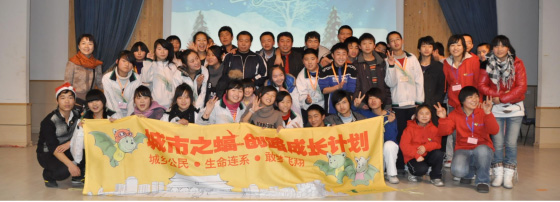
Program Evaluation: Blessing Bat of the City
- measuring the impact of the Resilience and Path-Finding Programs
Methodology
We use both quantitative and qualitative methods to evaluate the impact of the Resilience and Pathfinding intervention programs in both Phase I and Phase II.
The quantitative approach consists of two parts:
- Standardized Psychological Tests to assess psychological changes, including tests of resilience, optimism, self-efficacy, empathy, general health, etc. Both "treatment" students who participated in our program and a comparable group of "control" students who did not participate took part in the testing.
- Resilience / Pathfinding Program Feedback Forms which solicit direct feedbacks from students regarding their experience of the program, particularly regarding the messages they have received and their ratings of the various lessons and activities.
The qualitative approach has two components:
- Longitudinal case studies comprising a series of interviews of six students who participated in our program and their parents. At least two interviews, one at the beginning phase of our intervention and once after its completion, were conducted per student.
- Written feedbacks submitted by students who participated in the program.
Summary of Phase I Evaluation Results
Main findings of quantitative evaluation
The quantitative evaluation shows that the Resilience and Pathfinding programs were effective in raising various positive attributes among migrant students, including self-efficacy, coping, and optimism. Students who participated in our programs also strengthened their understanding of how their rural and urban backgrounds can be their assets. The pathfinding programs helped students to understand the significance of early planning, to explore their strengths and interests and the corresponding job opportunities. The charts below summarize the results of the Phase I programs. Each chart compares changes of the participating students with that of the control group students (students from the same grades in the same schools as the participants) over the program period. There is strong evidence that our program was effective in improving students' resilience (such as sense of self-efficacy and optimism)

Main Findings of Qualitative Evaluation
The qualitative evaluation asks students for subjective feedbacks of their participation experience. Overall, the students seem to love the programs and to have learned a great deal. Here are some of the written feedbacks from the students:
- About the Resilience Program
"(I have learned) how to better communicate and work with others and with my family"
"I have grown personally, I can express my talents in different activities. I have learned how to appreciate others and to listen to what they say."
"I have learned how to discover the goods and bads about myself and others, and developed many skills."
"(The program) enables me to feel how migrant children in Beijing like myself are also recognized and cared for by others."
"(The program) makes me realize that there are things that Beijing residents like us have to face. Failures and disappointment will be unavoidable, but I can face them with a positive attitude."
- About the Pathfinding Program
"There are more than one way to success, but we need to consider which one is the most suitable for ourselves. Once we have chosen, we have to persevere."
"(The program) helped me to have clearer goals, increased my confidence, and gave me experiences of solving difficult problems."
"I am no longer confused and have a clearer understanding of my future."
"I have gained a true understanding of myself and of what I should do when I step into the society in the future."
"The game of this activity matches what I want to say really well, and help me remember the lessons learned better."
